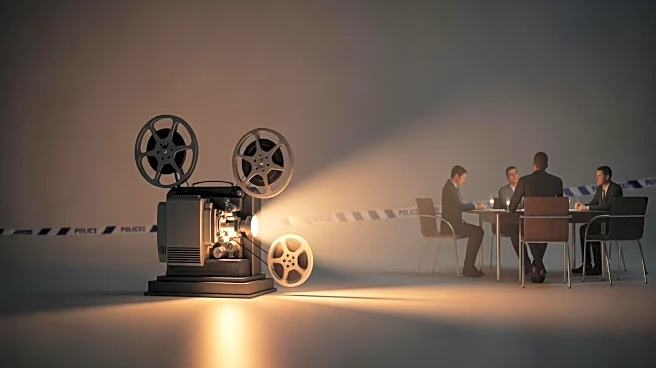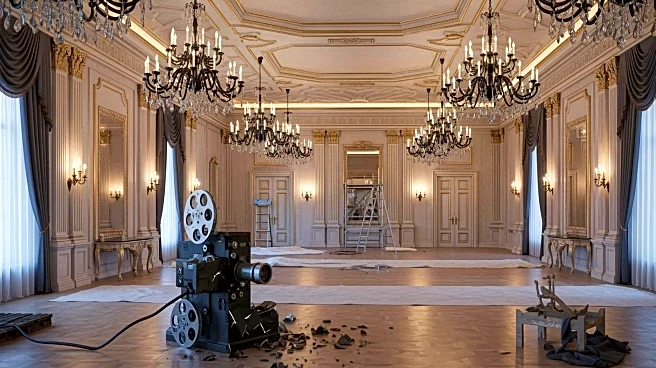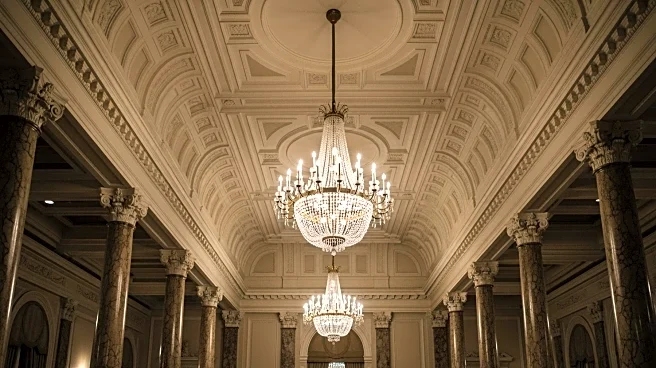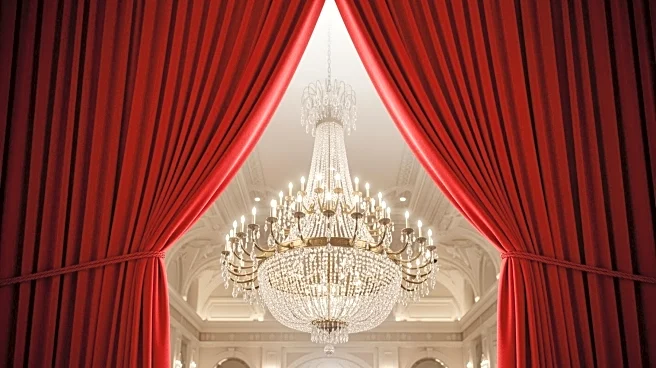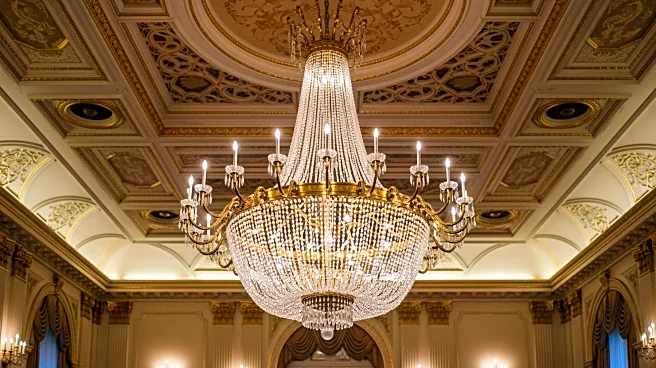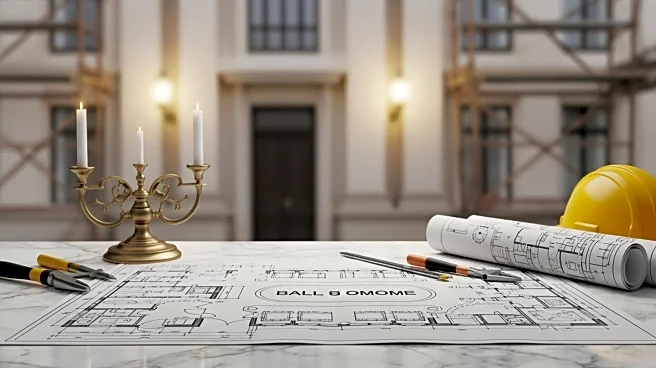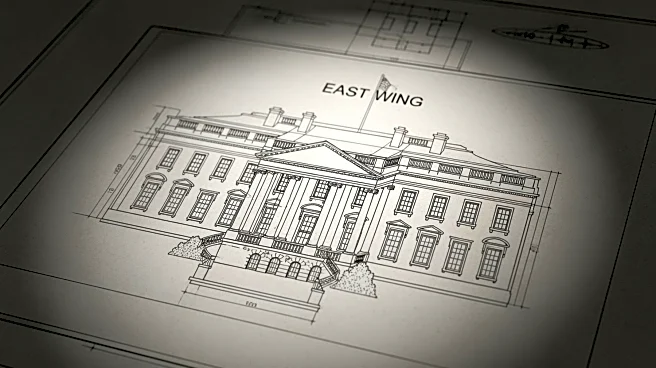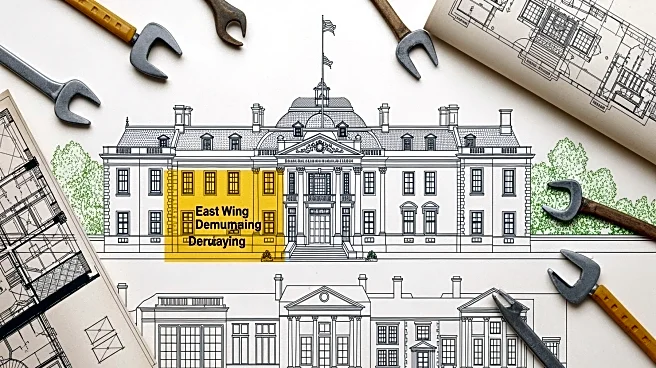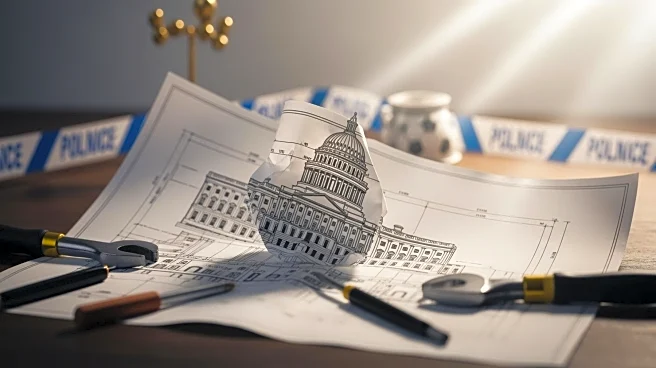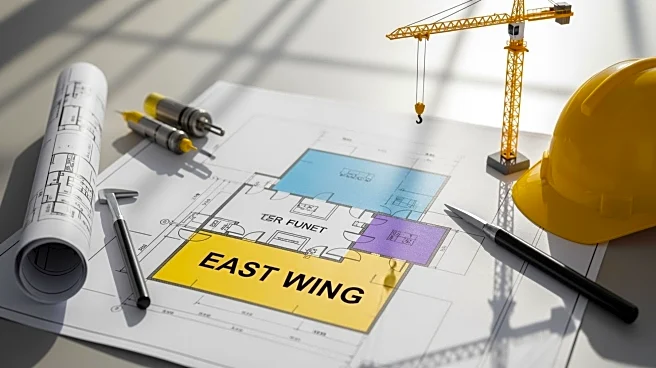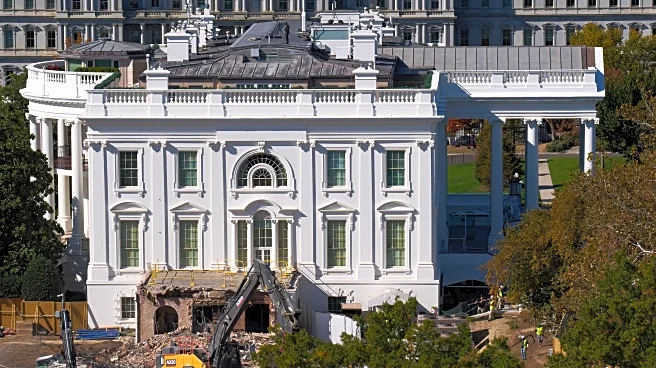What's Happening?
The White House Family Theater, a storied venue within the East Wing, has been demolished to make way for a new $300 million ballroom under President Trump's administration. Since its establishment in 1942
by Franklin D. Roosevelt, the theater has been a private space for presidents to watch films and rehearse speeches. It has hosted a variety of films, from documentaries to Hollywood classics, and has been a favorite spot for many presidents, including Jimmy Carter and Barack Obama. The theater's demolition is part of a larger redevelopment plan for the East Wing, which traditionally housed the First Lady's office and other significant features.
Why It's Important?
The demolition of the White House Family Theater represents a significant change in the cultural and historical fabric of the presidential residence. The theater has been a unique aspect of the White House, providing a private venue for presidents to engage with cultural media. Its removal to make way for a ballroom highlights a shift in priorities regarding the use of space within the White House. This decision may affect how future presidents interact with cultural and entertainment media, potentially altering the traditional functions of the East Wing. The move has sparked discussions about the preservation of historical elements versus the need for modernization.
What's Next?
As the East Wing undergoes redevelopment, there is uncertainty about whether a new theater will be included in the plans. While the White House has not confirmed any details, there is hope among historians and cultural enthusiasts that a new screening room will be part of the renovations. The completion of the ballroom and any additional facilities will likely influence how future administrations utilize the East Wing. Stakeholders, including historians and cultural preservationists, may advocate for the inclusion of a new theater to maintain the tradition of film screenings at the White House.
Beyond the Headlines
The removal of the White House Family Theater raises questions about the balance between preserving historical sites and adapting to contemporary needs. The theater was not just a place for entertainment but also a cultural touchstone that reflected the personal tastes and interests of various presidents. Its demolition could lead to a reevaluation of how historical spaces are valued and maintained within the White House. This event may also prompt discussions on the broader implications of altering historical landmarks in favor of modernization.
